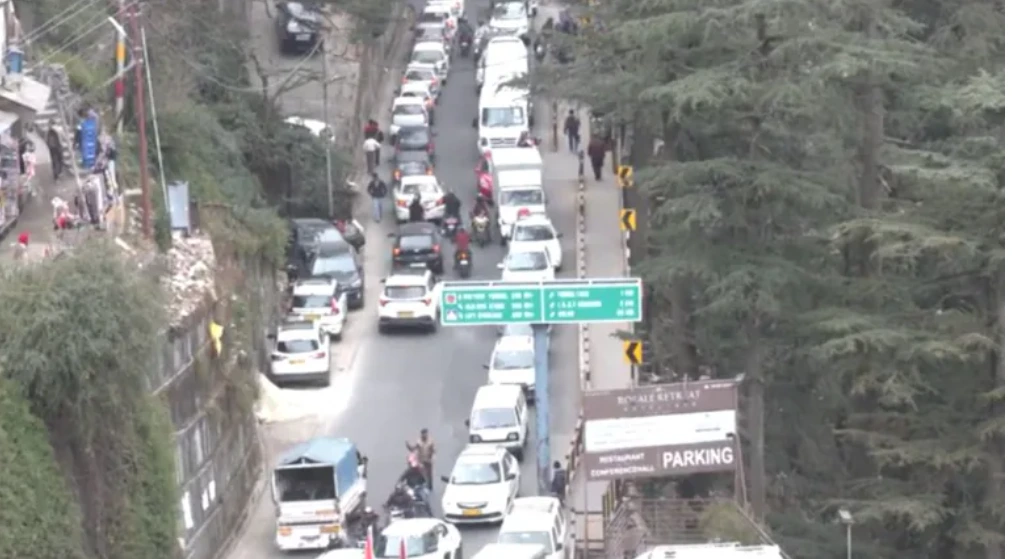India’s much awaited indigenously built semi-high speed engineless train Train 18 or T18, which is being regarded as a successor to the 30-year-old Shatabdi Express, is set for roll out with Indian Railways starting its trials today (Monday, October 29).
Made in just 18 months, T18 will replace the Delhi-Bhopal Shatabdi – India’s fastest – next year. The 16 coach fully AC train set has been manufactured at ICF Chennai under the ‘Make in India’ initiative at a cost of Rs 100 crore.
Train 18 has a potential to travel up to the speed at 160 kmph as against 130 kmph for Shatabdis and will result in the travel time being reduced by around 15% once tracks are fitted to suit.
India’s first engine-less train was developed by Chennai Integral Coach Factory in 18 months, the full AC train is designed in such a way that passengers can have a look at the driver’s cabin.
Train 18 has an aerodynamic driver cabin at each end. The entire set operates as a computer unit; the various equipment of Train 18 “talk to each other digitally” says ICF General Manager Sudhanshu Mani.
PTI quoted Sudhanshu Mani as saying that Train 18 will cost nearly Rs 100 crore to build the prototype and subsequent production will bring down the cost.
The self-propelled train, fitted with CCTV cameras, will have two executive compartments.
The two executive compartments will have 52 seats each, whereas trailer coaches will have 78 seats each. A unique feature of the executive chair car seats is that they can be rotated 360 degrees to face fellow passengers or to align with the direction of the train.

The non-executive chair car has seats in the usual 3+2 configuration. These European-style seats have a leather-like covering with graded colouring of purple and pink. The middle table area of the coach now has foldable snack tables attached to it. This closes the gap between the seat and the table, making it easier to eat food.
Instead of aircraft-like reclining system where you push the back support, passengers need to push forward the seat below, hence creating a reclining posture. The feature does not reduce the space available to the passenger sitting behind you. In case of executive chair cars, this can be done with a button.

Train 18 has continuous windows for panoramic passenger viewing experience. The windows also have touch-based push up/down blinds.
Train 18 has aircraft-like diffused LED lighting which can brightened or dimmed depending on the time of the day. Each seat also has personalised reading lights.
It has an on-board infotainment system with Wi-Fi, vacuum toilets, besides two GPS-enabled information screens at each end of the coach that will keep you informed about the next destination, time of arrival and the speed.
It has spacious cushioned luggage racks and toilet occupancy indicators.

Train 18 is disabled-friendly. The driver cabins allow for wheelchairs to be rolled in from each end of the train and the trailing coach area next to the driver cabin has space to park wheelchairs. The toilets in this coach are also disabled-friendly.
Train 18 has centrally operated automatic doors with sliding footsteps to bridge gap between platform and train. The coach entry area also has automatic sliding doors with optical sensors. Like in a metro, the doors of Train 18 would open only after the train stops to ensure safety of passengers. The train would start only after all doors are shut.
The footstep in a coach’s doorway slides outward when the train stops at a station, enabling passengers to alight safely with comfort in view of the variation in height between a train’s floor and the platform.
Train 18, a 100 per cent ‘Make in India’ project, will have a stainless steel car body with LHB as the base design.
It has a colour scheme of white and blue by ICF – a first for Indian Railways. It gives the look and feel of a world-class bullet train!
The propulsion system and rigid couplings in the bogie mean jerk free rides with faster acceleration and deceleration. The overall journey time will be cut by at least 15%.
Train 18 makes use of regenerative braking, making it more energy efficient. Train 18 will have no power cars or diesel-based locomotives, hence the carbon footprint would also be lower.
After test runs in Chennai, the train will reach Delhi on November 7 and then move to the Moradabad-Bareilly section for a second round of test run, reported NDTV. The final trials will be held between Kota and Sawai Madhopur in Rajasthan.


 India News15 hours ago
India News15 hours ago
 India News16 hours ago
India News16 hours ago
 India News13 hours ago
India News13 hours ago
 Entertainment12 hours ago
Entertainment12 hours ago
 Latest world news11 hours ago
Latest world news11 hours ago
 India News18 hours ago
India News18 hours ago
 India News18 hours ago
India News18 hours ago
 India News13 hours ago
India News13 hours ago

















